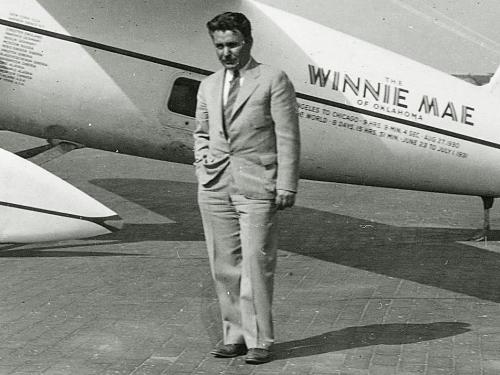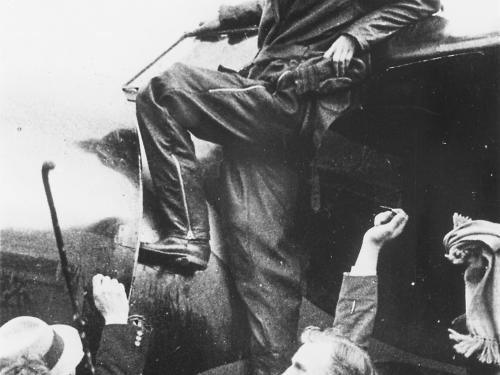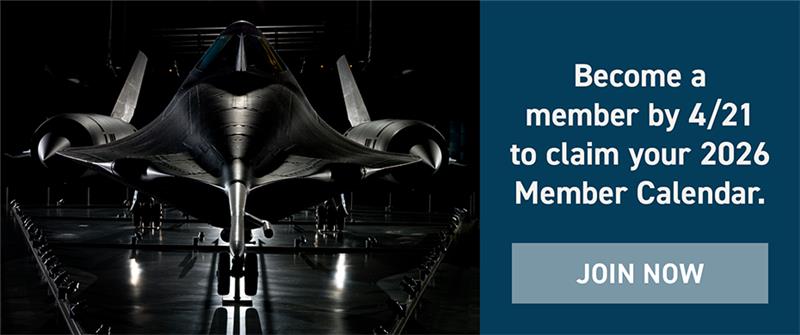
Stories of daring, stories of technological feats, stories of prevailing against the odds ... these are the stories we tell at the National Air and Space Museum. Dive in to the stories below to discover, learn, and be inspired.
Showing 661 - 670 of 698

July 22, 2010
July 22, 2010, marks the 77th anniversary of Wiley Post’s 1933 solo flight around the world in the Lockheed 5C Vega Winnie Mae. This record-breaking flight demonstrated several significant aviation technologies. It used two relatively new aeronautical devices—an autopilot and a radio direction finder.
June 25, 2010
Sixty years ago, before dawn on a humid June morning, a massive North Korean ground army, and aircraft flown by Soviet pilots, pushed across the border into South Korea.

June 16, 2010
What does it take to organize a fly-in at the National Air and Space Museum? Lots of time and lots of good friends! As we head into our sixth year of Become a Pilot Day, it’s a great time to look back at how it all started and where we go from here. As a pilot myself, the idea of a fly-in was a no-brainer.

June 11, 2010
10 Cool Things You May Not Know About The Museum's Lockheed SR-71 Blackbird

June 04, 2010
Many visitors express the wish to see the interiors of aircraft and spacecraft on display in the Museum. But to protect these historic treasures, they must be displayed behind barriers, which makes it impossible to see inside. But there are several cockpits you can see in the Museum, a day devoted to getting up close with aircraft, some cool electronic views, and a couple of great books that give those who are curious some excellent interior views.

May 28, 2010
May 20-21, 2010, marked the 83rd anniversary of Charles A. Lindbergh’s historic solo, nonstop flight from New York to Paris. As a result of this feat, Lindbergh became an instant hero and celebrity. But how do we explain the overpowering public reaction to what some thought was a stunt? In his essay titled, “The Meaning of Lindbergh’s Flight,” published in 1960, historian John William Ward theorized that Lindbergh enabled Americans to look both forward to the technological future, which they feared and misunderstood, and backward to their pioneering past. A more cynical interpretation is that while Lindbergh’s flight was a truly courageous act, he became famous for being famous. Also, we know that his advisors crafted a tightly-managed persona and created a squeaky-clean, idealized public image of him. There is perhaps more than a grain of truth in each analysis.

May 20, 2010
On May 20, 1932, that Amelia Earhart set out in her Lockheed 5B Vega to become the first woman to fly nonstop and alone over the Atlantic Ocean. Departing from Harbour Grace, Newfoundland and landing in Londonderry, Northern Ireland about 15 hours later, she also became only the second person to solo the Atlantic, the first being Charles Lindbergh in 1927. It was also her second trip across the Atlantic. Earhart first came to the public’s attention four years earlier, in June 1928, when she made headlines for doing nothing more than riding as a passenger--but she was the first female to do so. And although it didn’t matter to the public that she never touched the controls of the aircraft during the transatlantic flight from Newfoundland to Wales, it mattered to Earhart.

May 15, 2010
This month marks 80 years of female flight attendants. It's hard to imagine a time without them, but until 1930, airlines employed male stewards. That changed when Ellen Church, a nurse from Iowa, approached Steve Simpson at Boeing Air Transport (later United Airlines) with the radical idea of putting women nurses on airliners.
May 14, 2010
In view of Dom Pisano’s blog on the IMAX films, I thought I might offer some comment on what it is like to see yourself five stories tall on the BIG screen

May 06, 2010
The superlatives tend to pile up pretty quickly when it comes to the rigid airship Hindenburg, the pride of the Deutsche Zeppelin-Reederei line...It’s a shame, though, that the Hindenburg is remembered today primarily for its tragic final flight.
